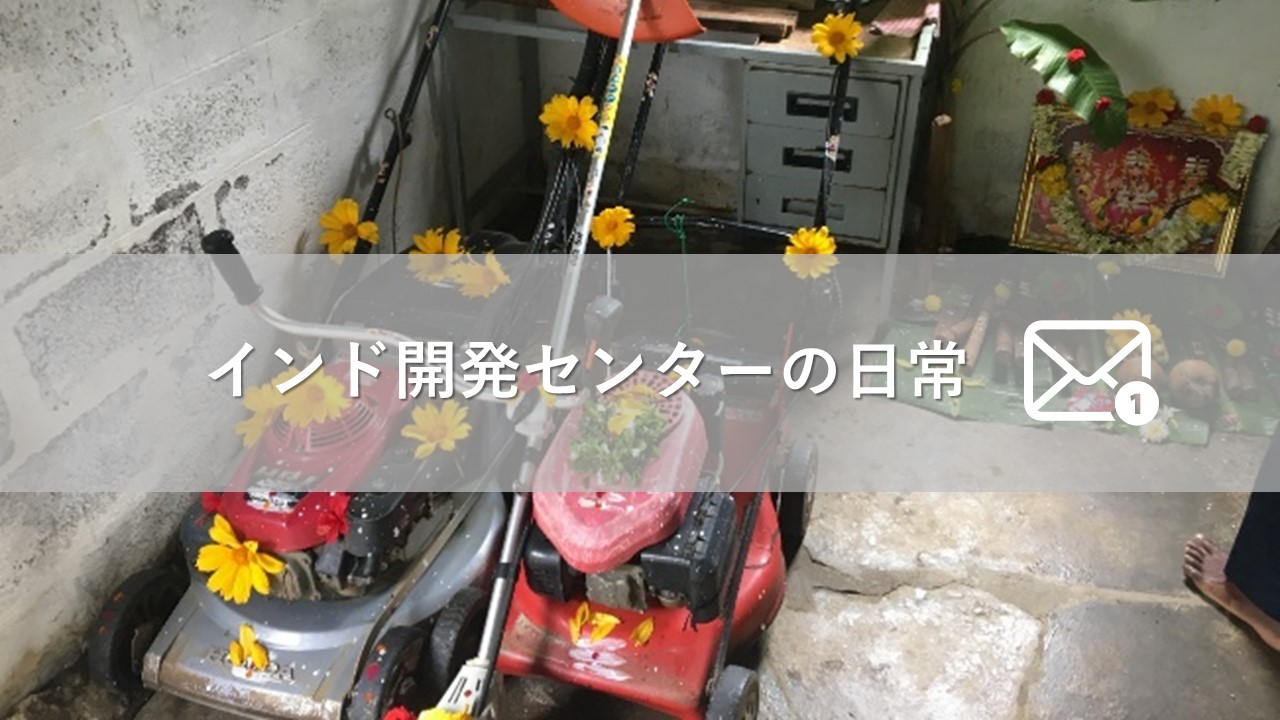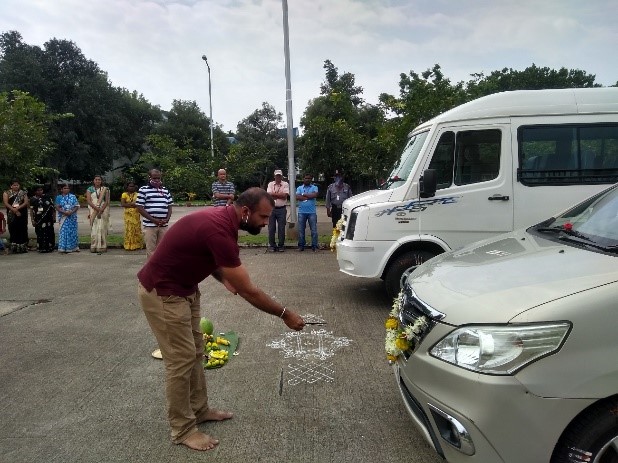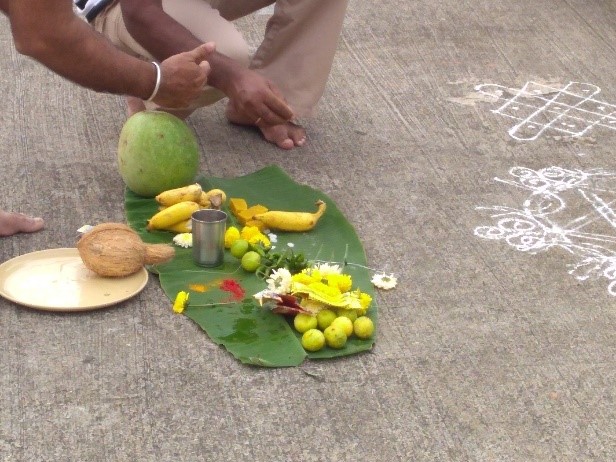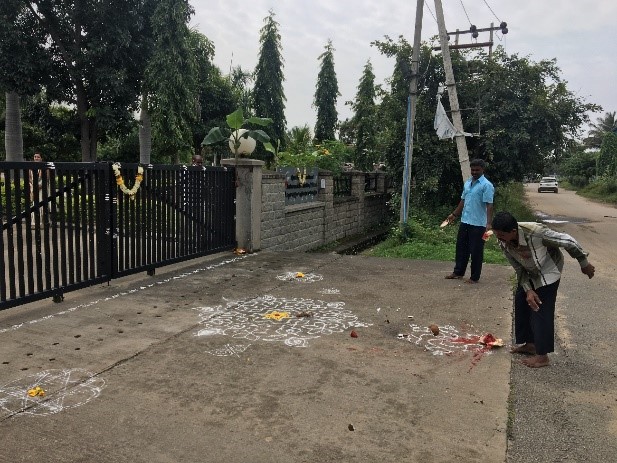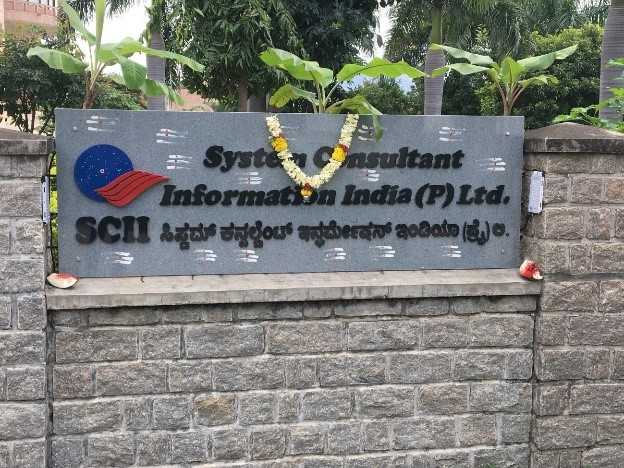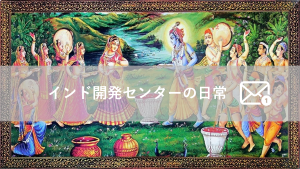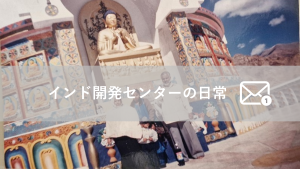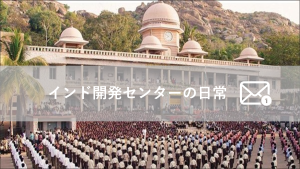皆さんこんにちは。インド担当の久保木です。
今回から弊社の子会社のSCIIより現地の様子を伝えてもらうシリーズを始めたいと思います。題して「インドSCIIだより」。普段なかなか知ることがない現地の文化やイベント、インド人メンバーの様子を伝えていければと思います。第一回目の今回はインドで行われています、道具に祈りを捧げるとっても変わったお祭りについてインドメンバーに書いてもらいました。最後まで読んで頂けますと幸いです。
アーユダプジャ
日本では年に一度、「供養祭り」と呼ばれる祭りが行われています。そこでは職人や芸術家など、特定の道具を使って仕事をする人たちが、自分たちの道具に対して感謝を捧げ、古くなった愛着のある道具に対して供養の儀式を行います。神道では、人や動物、植物だけでなく、物にも魂が宿ると考えられています。このお祭りでは、その道具によってもたらされた幸福に対して感謝を捧げます。儀式の後、古くなって壊れた道具たちは一堂に集められ焚き上げられ、煙は空へ昇っていきます。
実はインドでも似たような祭りが行われています。アーユダプジャと呼ばれるものです。そこでは人々の生活を助けてくれるすべての器具や工具に対して敬意や感謝の念を表します。インドの文化では車を使い始める際、まず初めに車に対して一礼をします。本を使うときにも初めに本に対して一礼をします。それがどんな道具であれ、こうした考えが基本にあります。アーユダプジャではすべての道具に対して、それが工場で使うものであれ、農家で使うものであれ、家の中で使うものであれ、敬意をもって扱うことを示します。発電機から芝刈り機、鎌やクワにいたるまで例外はありません。畏敬の念を持って道具を扱わなければ、道具は何も生み出してくれません。楽器を例にとっても同じことが言えます。ある人が持っても雑音しかならないものが、別のある人が持つと無条件に心奪われるほどの音色を奏でることがあります。それは、どのように楽器と向き合うかという違いによるのです。
左:車に祈りを捧げるドライバー 右:車の前に置かれた供物
敬意の念とは、崇拝や、儀式的なものではなく、単純にそのものを大切に考えることであり、それはそのものとの深い繋がりをもたらします。その繋がりによって、道具をうまく使いこなすことができるのです。自分の道具を敬意を持って扱うことで、私たちは常に私たちが神と考えるものとつながっているのです。
左:花で装飾された芝刈り機 右:神前に並べられた工具と供え物
南インドのお祭り、アーユダプジャは「機械の崇拝」と訳され、宗教と科学が絡み合うドラマチックな事例と言えます。南インド、特にカルナタカ州では、科学者やエンジニアがオフィスや研究室などで、僧侶によって取り仕切られた儀式に参加します。すべてのアーユダ(道具や機械)はキレイに洗われた後、花で装飾されます。僧侶はマントラ(真言)を唱えながら儀式を進めます。厳かな雰囲気の中で、人々の繁栄を願い、儀式の最後にはカボチャを地面に叩きつけて割ります(カボチャは祈りの象徴であり、悪霊を遠ざけてくれる)。終わった後は、供えていたお菓子を皆に配り、みんなでお祝いをします。
左:カボチャを地面に叩きつける社員 右:装飾された会社の看板
この経験は、感情的で象徴的な意味を持っています。この文化、食べ物、楽しさ、エンターテイメントが詰まったジェットコースターのようなアーユダプジャをぜひ一度体験してみてはいかがでしょうか。
(Gagana Nagabhushan)
※日本語訳は一部分かり易いように原文から表現を変えています。
今回記事を書いてくれたSCIIメンバー
Gagana Nagabhushanさん

―自己紹介―
<好きなこと>
- 体を動かすこと。健康的な生活を維持すること
- 家族や友達と過ごす時間。ショッピングや音楽を聴くこと
- 世界中を旅することが夢
<本人より一言>
常に新しいスキルを学び、古い習慣を改善し、自分を成長させたいです。仕事の面であれ、プライベートであれ、または精神的なものであれ、常に成長を意識していきたいです。
―終わりに―
いかがでしたでしょうか。最後まで読んでいただきありがとうございました。人々の生活の中に宗教が深く根付いていることが見て取れますね。インドでは大きな数千人規模の工場でもこうした儀式は行われているようです。ちゃんとお祈りをすることで安心して働けるわけです。道具を大切にするといい結果が出る、という考えはとても良いですね。私も会社支給のPCを大切にしたいと思います…いい結果がでますように。
今後もこのような形で現地の様子をお伝えしていきますのでどうぞお楽しみに。
SCII: <https://www.scii.in/>
<原文>
Ayudha Pooja at SCII
In Japan there is a festival where, once a year, workers and artisans and even artists who need specific items to do their jobs, will express their gratitude and celebrate the last rites in memory of beloved old tools through a ceremony called Kuyo matsuri or Memorial festival held either in a Buddhist temple or Shinto shrine. In the Shinto traditions, items as well as humans, animals, plants, and objects are considered to have souls. This festival acknowledges the good given to people by their tools. After the service, the old or broken tools are gathered and burnt in the flames of a redemptive fire so that their smoke goes up to heaven.
In India we have a similar festival, Ayudha Pooja when we honor and express gratitude for all the instruments that add meaning to our life. In Indian culture, we set up this aspect that whatever tool it may be, if you want to use your vehicle, first bow down to it and then use it. If you want to use a book, first bow down to it and then use it. Ayudha Pooja signifies, every implement that you use, whether it is in industry, agriculture or at home, we approach it respectfully. Unless we approach something with a certain sense of reverence and a deep sense of involvement, it will not yield. The same musical instruments can become different thing in different people’s hands. In one person’s hands it becomes noise, in another person’s hands it becomes unconditionally enthralling music because of the way we approach it.
Reverence does not mean worship or a ritual, reverence simply means you look up to it in a certain way and which brings a deep sense of involvement. Once that involvement is there, we will handle it well and will get the best out of it. If we treat our implement with reverence, we are constantly in touch with what we consider divine.
Ayudha Pooja, a South Indian festival translated as “worship of the machines,” is a dramatic example of how religion and science intertwine. Across South India, but especially in the state of Karnataka, scientists and engineers celebrate the festival in offices, laboratories, and workshops by attending a pooja led by a priest. All the Ayudhas (instruments and Machineries) are washed and decorated with flowers, and the priest performs the Pooja by chanting mantras. A divine mood is set during the pooja for better growth of each and every one, with sweet distribution followed by breaking the pumpkin (as a symbol of the prayer/pooja and to weed the evil spirits away).
The experience can have an emotional and symbolic significance, everybody is welcome to experience the rollercoaster ride of culture, food, fun and entertainment on the occasion of Ayudha Pooja.
(Gagana Nagabhushan)

